| HOME |
|---|
PISCES
The Fish
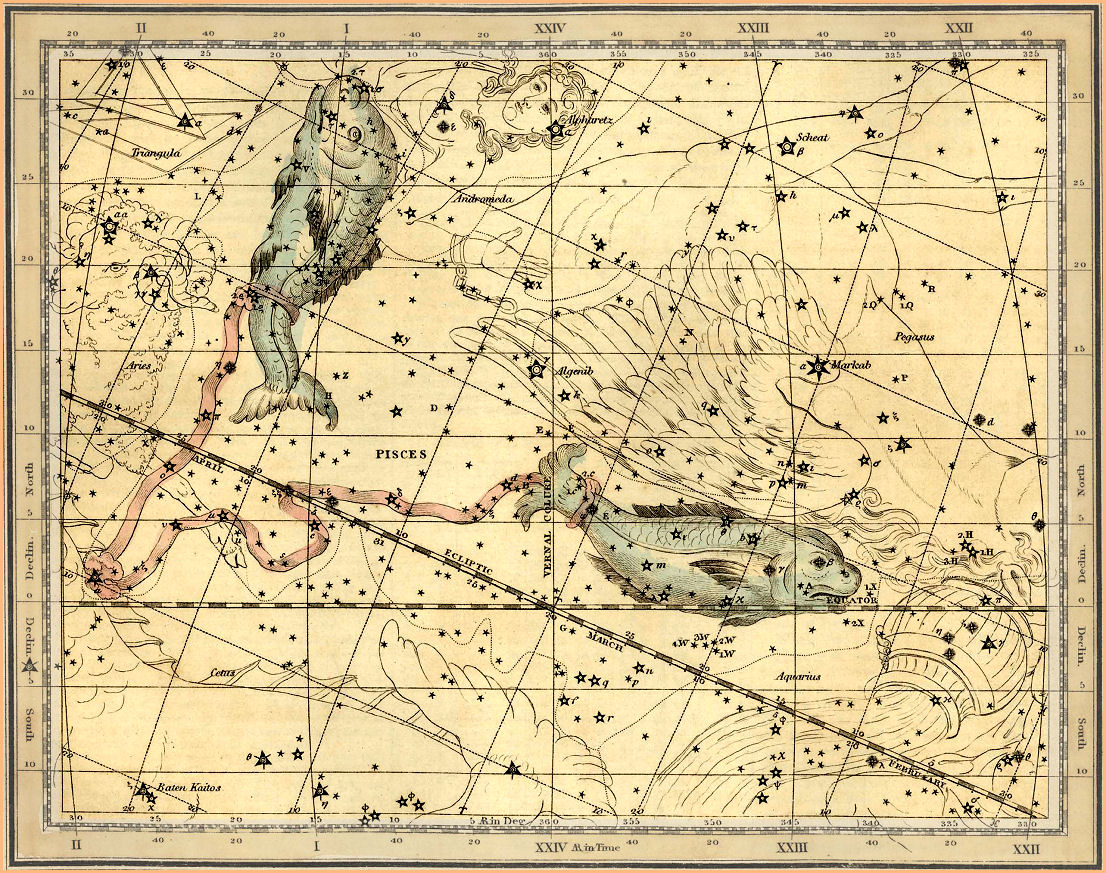
Pisces - Celestial Atlas by Alexander Jamieson - 1822
| HOME |
|---|

It is said that when the goddess Aphrodite (Venus), and her son Eros (Cupid) were attacked by the monster, Typhon, they transformed themselves into fish, joined by a cord tied to their tails so they wouldn't become separated, and escaped into the river Euphrates, their daring adventure recorded forever in the stars.
As ancient as it is, Pisces is a faint constellation. The easiest way to find it is to look for the unmistakable Great Square Of Pegasus. The circlet of Pisces will be very nearby, and from there you should be able to trace the outline of the two fish and the cord that joins them.
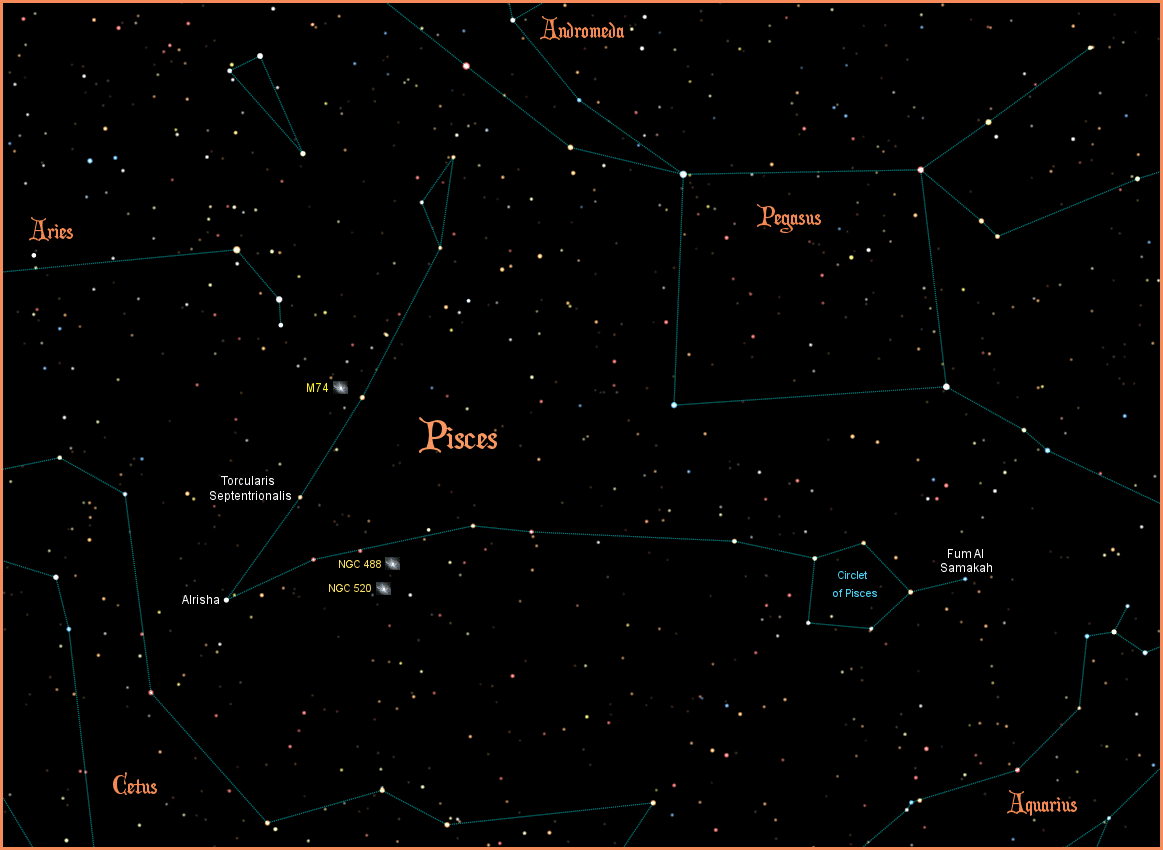
The alpha star in the constellation is only third brightest, and perhaps allotted the prime designation because of its vital role in keeping the goddess and her son from becoming separated in the waters of the Euphrates. It is named Al Rischa, Arabic for the cord, and is a binary system, consisting of an A0V white main sequence star, and an almost identical A3V white main sequence star that orbit each other every 720 years. The combined magnitude of the two stars is 3.82, and they are 139 light years away.
The beta star is likewise not amongst the brightest of the constellation, and most likely also named for its import, Fum Al Samakah, Arabic for the mouth of the fish. It is a B8V blue/white main sequence star with a magnitude of 4.53, about 495 light years away.
Continuing the trend of naming the dimmer stars instead of the brighter ones, at magnitude 4.26, Omicron Piscium is named Torcularis Septentrionalis, which is Latin for the northern press. It has been suggested that it is a reference to a grape, or olive press, but the true origins of the name are no longer known. It is a G8III yellow giant, about 250 light years away.
Eta Piscium is not usually named on star charts, but R.H. Allen dug up the name Kullat Nunu which dates back to Babylonian times. Interpreted as the cord of the fish, the name would certainly attest to the constellation's antiquity. Since it is the constellation's brightest star at magnitude 3.62 it certainly deserves a name, and Kullat Nunu definitely has a nice ring to it. It is a G7III yellow giant, about 350 light years away, with a small, dim companion about which little is known.
Fourteen planetary systems have been discovered so far in Pisces. The stars are all beyond visual magnitude and the planets are all gas giants. For more information on these and other extrasolar planets, visit NASA's New Worlds Atlas, and The Open Exoplanets Catalogue.
M74 (NGC628) is a spiral galaxy about 32 million light years away, thought to contain about 100 billion stars. A magnitude of 9.4 stretches the limits of a small telescope, but the large mirrors of the Hubble Space Telescope show it in remarkable detail.

The galaxy NGC 524 is about 90 million miles away. It is known as a Lenticular Galaxy, thought to be the aging remnant of a spiral galaxy that has lost much of its gas and dust primarily to new star formation, causing its spiral structure to dissipate. A magnitude of 10.3 puts it out of reach of most small telescopes.
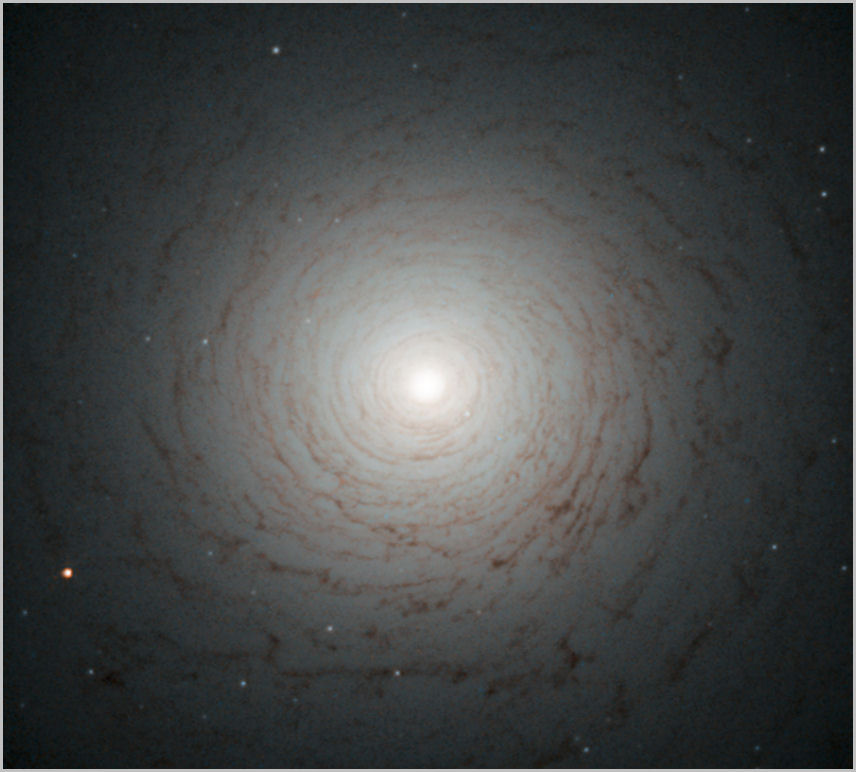
At a distance of about 100 million light years, two galaxies are about half way through the multi-million year process of merging into one, and forming a new galaxy named NGC 520 (Arp 157). A magnitude of 11.4 puts it in the realm of large telescopes only.
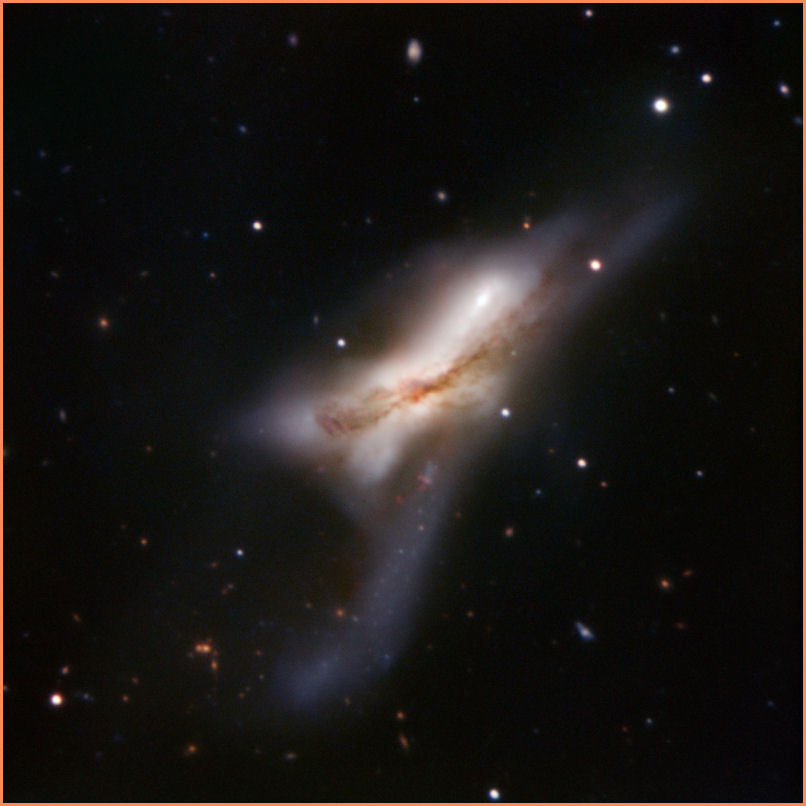
The spiral galaxy NGC 488 lies about 90 million light years away. Its magnitude of 10.3 makes it a challenge for a small scope.
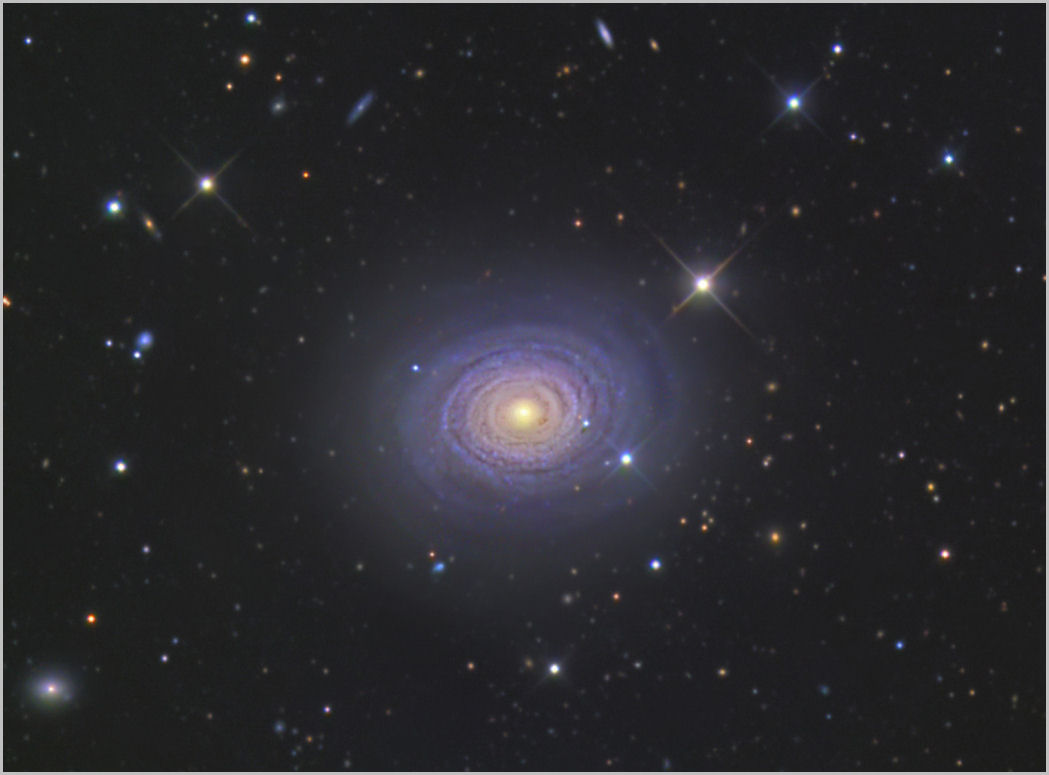
Pisces is one of the thirteen constellations that occupy the ecliptic, the path the Sun, Moon and planets travel across the sky. Twelve of these constellations make up the Zodiac, of which astrologers place so much import. Pisces also has the distinction of containing the point of vernal equinox. Known to the ancients as the first point in Aries, it is the point in the sky where the Sun crosses the celestial equator at the moment of the vernal equinox. Due to the slight wobble of Earth's axis called precession, this point has moved from Aries into Pisces over the last 2,000 years.
|
|
|
|
|
|